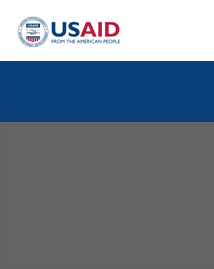WASHINGTON, D.C. – This year’s Ebola epidemic in West Africa is a jarring reminder of the need for a greater capability in all countries to rapidly detect and respond to new or re-emerging public health threats which “spill over” in humans from animal populations such as bats, rodents, and non-human primates. The speed with which diseases – such as HIV/AIDS, severe acute respiratory syndrome (SARS), Middle East Respiratory Syndrome-Coronavirus, H5N1 avian influenza, and the 2009 H1N1 influenza virus – can emerge and spread across the increasingly interconnected globe presents enormous challenges for public health, economies, political stability, and development. In order to prevent or limit the transmission and spread of these disease threats, National Governments in developing countries, especially where new threats are likely to emerge, need a comprehensive, proactive approach that draws on a wide array of multi-sectoral partnerships, technical disciplines and resources.
Emerging Pandemic Threats Program - EPT-2 ![]() (pdf - 910k)
(pdf - 910k)
To help with this effort, the United States Agency for International Development (USAID) is launching the Emerging Pandemic Threats 2 (EPT 2) program, which builds on the successes of the Agency’s programs in disease surveillance, training, and outbreak response. The focus of the EPT 2 program is to build on the operational platforms, institutional partnerships, and an expanded knowledge base developed over the past decade by USAID’s EPT 1 and the Avian Influenza (AI) portfolios to pre-empt or combat, at their source, newly emerging diseases of animal origin that could threaten human health. EPT 2 will directly improve the capacity of more than 20 focus countries in Africa and Asia to prevent, detect, and respond to infectious disease threats, which are key objectives of the Global Health Security Agenda and the International Health Regulations.
USAID’s EPT 2 program will focus on helping countries detect viruses with pandemic potential, improve laboratory capacity to support surveillance, respond in an appropriate and timely manner, strengthen national and local response capacities, and educate at-risk populations on how to prevent exposure to these dangerous pathogens. The EPT 2 program is being managed by USAID with technical collaboration from the U.S. Centers for Disease Control and Prevention, the World Health Organization (WHO) and the Food and Agricultural Organization. In addition to these partnerships, USAID has recently awarded three new projects to provide additional technical support to developing countries.
PARTNERS AND ACTIVITIES
PREDICT-2: The PREDICT-2 project will assist focus countries in monitoring viruses with pandemic potential as well as behaviors, practices, and conditions associated with viral evolution, spillover, amplification and spread. In addition, PREDICT 2 will improve predictive modeling to better focus surveillance and use surveillance and other data to support policy change and begin developing risk- mitigation strategies to reduce the risk of animal viruses spilling over, amplifying, and spreading in human populations. Implementing partners for PREDICT-2 are University of California-Davis, EcoHealth Alliance, Metabiota, Smithsonian Institution, and Wildlife Conservation Society.
ONE HEALTH WORKFORCE: Building on the university networks that were founded under EPT 1, the ONE HEALTH WORKFORCE (OHW) project will partner U.S., African, and Southeast Asian universities to train the current and future workforce across sectors (e.g. human health, animal health, environmental health) and disciplines (e.g. medicine, public health, epidemiology, agriculture, ecology).
These “One Health” university networks will partner with government ministries in focus countries to define the one health workforce and determine the competencies, knowledge and skills required at various levels of the workforce. These African and Southeast Asian universities will then be supported to develop curricula, training modules, field experiences, and other teaching and learning tools and opportunities to ensure that future graduates are prepared to address the complex, multi-sectoral disease detection, response, prevention, and control challenges in their countries and regions. Implementing partners for OHW are University of Minnesota and Tufts University.
PREPAREDNESS & RESPONSE: The Preparedness and Response (P&R) project will assist focus countries to build on the relationships with key national and international partners developed under the EPT 1 and AI programs. P&R will strengthen the use of One Health (i.e. multisectoral and multidisciplinary) approaches in strategic planning, promote a positive policy environment, share information across sectors and among partners, assess national capacity, and harmonize systems, The Project will facilitate and support countries to develop and maintain exemplary cross-sectoral capacity and skills for responding to public health events at the regional, national, and subnational levels. Ultimately P&R will help to address the practical issues confronting national governments as they strive to cope with the human, financial, and logistical constraints associated with preventing, detecting, and responding to public health (including pandemic) threats. Implementing partners for P&R are Development Alternatives Inc. (DAI), Training Resources Group (TRG), the Futures Group, and The African Field Epidemiology Network (AFENET).
PROGRAM EXPECTATIONS: USAID anticipates that the EPT 2 program will help develop and improve predictive models for early identification of viral and other biological threats in resource-poor “hot spot” regions and that it will enhance regional, national, and local capacities for surveillance, laboratory diagnosis, and field epidemiology in both the animal- and human-health sectors in these areas. These efforts will ultimately minimize the risk for the emergence and spread of new pandemic disease threats. The most immediate benefit of the EPT program’s investments in disease detection and response, however, will be reflected in their routine application in the management of more normative diseases in these areas, such as malaria, cholera, and meningitis. These contributions more broadly support the tenets outlined in the WHO's International Health Regulations and equivalent international health standards of the OIE.








Comment
Make a general inquiry or suggest an improvement.